- Home
- Orhan Pamuk
Other Colors Page 7
Other Colors Read online
Page 7
In those days Istanbul boasted many humor magazines, of which Vulture was the most distinguished; because their embroideries of news and enlargements of urban myths offered the fullest expression of this spirit of resistance, they were available in all barbershops of my childhood. Today, there is always a television blaring, drowning out older channels of communication and so greatly reducing the power of gossip and resistance in the city’s coffeehouses and barbershops; it should not come as a surprise that, with the advent of television, the golden age of Istanbul’s humor magazines, which once enjoyed a combined circulation close to a million, also came to an end. (Years later, when I went to a barbershop in New York and saw that the men waiting to be served were given not a humor magazine but a copy of Playboy, I was not terribly surprised.) As for Vulture, the magazine without which no barbershop was complete in the days of my childhood, it later emerged that its owner, Yusuf Ziya Ortaç, received secret assistance from a private fund controlled by Prime Minister Adnan Menderes and the ruling Democrat Party, but this sort of thing dates back to the 1870s, when Sultan Abdülhamit undertook to control the opposition by buying up its publications—a tradition that in a subtler way continues to this day.
When I was a boy waiting my turn at the barbershop, flipping through the pages of Vulture, stopping now and again to study locally drawn caricatures of citizens aghast at the prices of things, enjoying jokes about bosses and their secretaries, stories by the popular humorist Aziz Nesin, and cartoons lifted from Western magazines, my ears were always alert to the conversations around me. Of course the topic discussed at the greatest length was football and the football pools. Some, like Toto, the head barber, would, as he moved among the three customers in the three chairs, offer up his thoughts on boxing or the horses, which he played from time to time. His barbershop, which bore the fanciful name Venus, was at the end of the passageway across the street from our house in Nişantaşi. Toto was a tired and sulky man with white hair, and the other of the two older owners was irritable and bald, while the third owner was in his forties and sported a thin Douglas Fairbanks mustache. I remember he was less interested in chatting with his customers about high prices, new shops in the neighborhood, singers and stars of the day, or domestic politics than he was in discussing international affairs and the state of the world. What most impressed me was how, when a customer arrived who was particularly eminent, learned, expert, powerful, or upper class, this barber and the others would start with humble questions beginning with We of course have no idea …, and once they had drawn him out they would quickly move the conversation square into the man’s field of knowledge and power. If they got an answer like It costs this many liras or Those cargo ships are bigger than a football field, or if they were told that a famous politician had a shocking weakness or had committed an act of cowardice, they would either mutter something like chk-chk-chk or chirp-chirp-chirp, like so many little birds, or the razor that had been gliding so smoothly and close would stop for a moment while barber and customer eyed each other in the mirror and an interesting silence would ensue.
If, after trying to open a conversation with questions like So, what’s happening? or How are things? or May I offer you tea? the customer remained grim and silent, they would jabber among themselves. In these conversations, one played the man always down on his luck, the second the butt of every joke, and the third ever the cunning one; the way they used to needle one another in these conversations (as in “Mehmet outwitted Toto once again this week”) reminded me of the sparring I’d hear on the radio between Karagöz, the hero of traditional shadow theater, and his sharp-tongued wife, Hacivat. Once, after a customer had had his shave, taken off his apron, allowed the boy to comb his hair, given out his tips, and left the shop, the Fairbanks mustache-sporting owner, who had shown him such courtesy and deference only moments earlier, began to curse this man’s mother and his wife: This was how I discovered that the adult world was populated by duplicitous types whose anger was deeper than anything I had known in my child’s world. At the barbershops of my childhood, they used scissors, huge clippers they would angrily toss away when they didn’t cut well, combs, cotton balls to keep hair out of the ears, cologne, powder, and, for the grown-ups, cutthroat razors, shaving cream, shaving combs, and white aprons. Today, apart from a handful of electric appliances—like the hair dryer—the tools have not changed much, and this must remind us that though Istanbul writers have never recorded their traditions, these barbers (who have been using the same tools for centuries, gossiping as they work) must have been speaking in the same way for just as long.
We can see in miniatures of the age that the cutthroat razor was in use in the seventeenth century. When passing before Sultan Ahmet, representatives of the barbers’ guild, wishing to prove their fine talents, had a barber suspended upside down from the roof of the exhibition carriage as he gave his customer a perfect shave. In those days, the head of the man to be shaved would rest against the barber’s knee; this custom paved the way for a classic love story in which a man contrived to have all his hair, his beard, his mustache, and his every whisker and bristle removed, just to be near a beautiful barber’s apprentice. We see the same motif in the folk tale about Kerem and Asli, in which the lover has teeth pulled just to be close to a beautiful dentist, a reminder that barbers and dentists were both seen as possessing expert knowledge and somewhat overlapping expertise. Barbers also performed circumcisions and other small surgical procedures, some in their coffeehouses and others in separate establishments: This gave them a central importance in Istanbul society. But when I was a child, what frightened me about barbers was that they could pull words from our mouths as skillfully as dentists extract teeth and disseminate them as fast as any newspaper.
This is why, when I was sitting in the Venus barbershop reading Vulture and heard a voice say, “Come along now, young master,” I would be as tense as if I had been invited to take my place in a dentist’s chair. It was not just because the trimmer sometimes pulled the hairs on my neck or the point of the scissors dug into me (my visits to the barbershop always seemed to involve pain); I was afraid because I thought I might let some family secret slip. I had an uncle who’d gone to America and never returned. After they had passed a white cloth over my head and fastened it as one might about a man headed for the gallows, the first question they would ask was, “When is your uncle coming back from America?” I didn’t know. “How many years has he been gone?”
“He’s been gone soooooo long,” another would answer. “He’ll never come back, no, never. Did he ever do his military service?” There would follow a silence. I would stare in front of me, as ashamed as if I had been the one who’d “fled” the country before his military service, and I’d remember my grandmother crying as she read my uncle’s ever more infrequent letters in ever more broken Turkish. But my real fear was that the barbers might extract from me yet other secrets that my family had succeeded in hiding and that I had no wish to remember.
Was it because I’d foreseen these perils, and because I felt from the moment I walked in that I would soon be sweating as profusely as I might today, sitting opposite a journalist with an interest in my private life, that on my very first visit to the barber I burst into tears? For my next few haircuts, and on days when I was ill, Toto, the owner with the white hair and the joyless face, would pack the tools of his trade into a bag and come to the house to cut my hair. He’d spread a newspaper on the table, place a stool on top, and sit me on it so I was at the same height as his scissors. This gloomy man who held himself apart from his loquacious friends remained silent here too, and because I enjoyed this interlude as little as he did, it wasn’t long before I returned to the barbershop for my haircuts. That was when I understood that a barber who shaves you in silence, without drawing a word from your mouth or sharing any neighborhood or political gossip, and cursing no one, is not a barber at all.
CHAPTER TWENTY-THREE
Fires and Ruins
Before I was b
orn, my grandparents lived in a great stone mansion that they shared with my uncles, my father and mother, and the rest of our large family; it was later rented by a private primary school, and then it was torn down. My own primary school was in another great mansion, until it burned down. When I was in middle school, we played football in the garden of yet a third old mansion; this too succumbed to fire and was later demolished, like so many shops and buildings from my childhood.
The history of Istanbul is the history of fires and ruins. From the middle of the sixteenth century, when the building of wooden houses first became popular, through the first quarter of the twentieth century—for more than 350 years, then—what has shaped the city and opened up its avenues and streets (leaving aside the construction of the big mosques) have been its fires. The site of a house fire was a subject of much discussion during my childhood and carried a whiff of bad luck. Because first floors were made of stone and brick, there would remain a few walls that had been burned but not destroyed, the first-floor stairs (of which the marble steps would have been ruined or stolen), tiles, broken glass, and vases; amid this debris little fig trees would sprout up and children would play there.
I wasn’t old enough to have witnessed the burning and destruction of entire neighborhoods; what I witnessed were the fires that destroyed the last wooden mansions. Most of them happened under mysterious circumstances, in the middle of the night. Until the fire brigade arrived, all the children and young people in the neighborhood would gather in the garden of the empty house where they once played and whisper to one another as they watched the raging flames.
“They burned the beautiful mansion down,” my uncle would say later, at home.
In those days it was against the law to knock down your old home to make room for the new apartment building that would show the world how rich and modern you were. But people would move out, and once the mansion had become uninhabitable due to neglect, rotting wood, and age you could get permission to tear it down. Some would try to speed up the process by pulling out tiles to let in the rain and the snow. A faster, bolder option was to burn it down one night when no one was looking. It was said for a time that these fires were set by the gardeners left in charge. It was also said that, before they burned down, the houses had been sold to contractors whose own men set them afire.
They were the objects of contempt in our family, these rich people who burned down houses in which three generations had once lived together, houses that were full of memories, destroyed in the middle of the night as if by common criminals. Appalled and affronted as they were, my family too had been coldhearted enough to sell the three-story art deco mansion in which my father, my uncles, and my grandmother had once lived and eventually to build a very ugly apartment house in its place. Later, to convince me that he had not been a party to this plan and had never “really” wanted that beautiful old house to be torn down, my father often talked of our return from Ankara, where we’d moved because of his work; when we’d come back and he’d seen the old house crumble under the sledgehammers, he’d stood before the garden door and wept.
As in so many old Istanbul families who owned these mansions, the “move to the apartment” provoked many disputes to which I was a witness. In principle, no one wanted to see those old houses destroyed. But no one could stop the squabbling, the feuding, or the deep-seated rivalries that led so many families to take their property disputes to court, in the end tearing down the disputed mansion and building in its place a new and ugly apartment building that no one liked from the outset. Later on, they would all speak mournfully of the old mansion destroyed, but of course they harbored the unspoken wish of bettering their lives with the income from their new apartments. Still, they all determineed to transmit the pangs of conscience, and the responsibility for this shameful business, to other members of the family.
The population of Istanbul went from one to ten million in a very short space of time, and if you were to view it from above you would see at once why all this family strife, this greed, guilt, and remorse, served no good purpose. Below you would see the concrete legions, as great and unstoppable as the army in Tolstoy’s War and Peace, as they roll over all mansions, trees, gardens, and wildlife in their way; you see the tracks of asphalt that this force leaves in its wake; you can see it coming ever closer to the neighborhood where once you led a timeless and heavenly life. If, after studying the map and the statistics, and tracking the movements of this unstoppable force, we consider the idea that one individual might be able to resolve a family quarrel, one might very well remember Tolstoy’s dark thoughts on the role of the individual in history. If we happen to be part of a relentless, expanding city, the rooms and gardens and streets in which we have made our lives—the walls that have given shape to our memories and our very souls—are doomed to be destroyed.
For those who resisted, or who tried to delay the inevitable, the final blow was expropriation. During my childhood, when many of Istanbul’s narrow little Ottoman streets were being cleared to make way for avenues, to be expropriated meant to be evicted, to be unjustly made homeless. Over the past fifty years, Istanbul has gone through two major road-making, or expropriation, drives, and I was six or seven years old during the first. I remember the scary walks I took with my mother in 1950 along the opposite shore of the Golden Horn, amid the dust of Ottoman ruins. The demolition area looked like a war zone; as each empty lot stood there awaiting its new life, it filled with endless fears and rumors. There was talk of some lot owners being favored over others when it came to compensation, of unnecessary expropriations, of maps indicating future expropriations, and of certain powerful politicians pulling strings to save a particular street or have the map changed. Wherever the roads along the Bosphorus and the Golden Horn diverted into a narrow lane passing through a village market, it would emerge that someone very rich or close to power lived in a house the road had swerved to avoid. This was much remarked by old ladies riding in a dolmuş and old barbers shaving customers and taxi drivers ever grateful for wider roads—vehemently in favor of the demolition, these last would always insist that it had not gone far enough. There was more to this than the desire for wide Parisian boulevards, expressing as it did the anger Istanbul’s new arrivals felt for the old city and its culture and the grudge they held against all that had come before them, and the Republic’s wish to forget the city’s Christian and cosmopolitan buildings, the city’s Byzantine and even Ottoman remains. In the 1970s, when the domestic automobile industry began to turn out cars that the middle classes could afford, the demand for fast roads decreed that the past would soon be hidden under concrete and asphalt.
There are two ways of looking at cities. The first is that of the tourist, the newly arrived foreigner who looks at the buildings, monuments, avenues, and skylines from outside. There is also the inside view, the city of rooms in which we have slept, of corridors and cinemas and old classrooms, the city made up of the smells and lights and colors of our most cherished memories. To those viewing them from the outside, one city can seem much like the next, but a city’s collective memory is its soul, and its ruins are its most eloquent testimony.
During the great demolition drive of the 1980s, I happened to be walking down Tarlabaşi Avenue as the bulldozers were shunting along, observed by a modest crowd. The work had been going on for months by then; everyone had become accustomed to it, so the anger and resistance had died down. Despite the drizzle, the walls kept coming down, dissolving into dust as they fell, and as we stood watching it seemed to me that what disturbed us more than seeing other people’s houses and memories destroyed was seeing Istanbul twist this way and that as it changed shape and knowing how even more fragile and transitory our own lives were in comparison. As children wandered among the wrecked walls, gathering up doors, windows, and pieces of wood, I understood how much these piles of rubble represented a loss of memory that would, in time, seem like second nature.
A few years earlier I had gone to visit the empty a
nd soon-to-be-demolished building that had once housed Şişli Terakki Lycée, where I had been enrolled from the last years of primary school until the end of middle school. I have now been walking the same streets for fifty years, and when I pass the site of my old school, which is now a parking lot, I remember both my days at the school and my last stroll through its empty classrooms. At first its ruination pierced me like a knife, but now it is something to which I am slowly becoming accustomed. A city’s ruins also help it to forget. First we lose a memory, but we know we’ve lost it and we want it back. Then we forget we have forgotten it, and the city can no longer remember its own past. The ruins that cause us such pain and open the road to forgetfulness become, in the end, the lots on which others can found new dreams.
CHAPTER TWENTY-FOUR
Frankfurter
It was a cold day in January 1964, in the early afternoon. I was standing in a corner of Taksim Square (which at that time was not yet a six-lane highway and was much more run-down than it is today), just outside a buffet that occupied the ground floor of one of the old Greek apartment buildings. I was awash in guilt and fear but also euphoric; in my hand was a frankfurter I’d just bought at the buffet. I took a big bite, but as I stood there, chewing amid the great chaos of the city, watching the circling trolleybuses and the swarms of women shoppers and young people rushing off to the movies, my joy abandoned me; I had been caught. My brother was walking down the pavement and, what’s more, he had seen me; as he came closer I could see at once that he was very happy to have caught me red-handed.

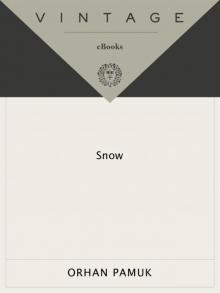 Snow
Snow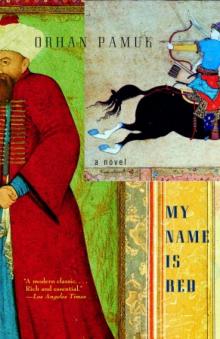 My Name is Red
My Name is Red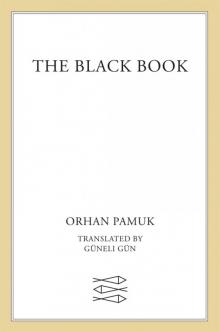 The Black Book
The Black Book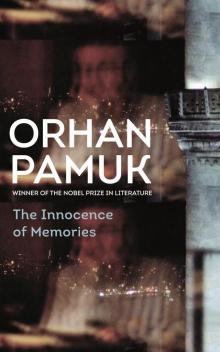 The Innocence of Memories
The Innocence of Memories The White Castle
The White Castle Other Colors
Other Colors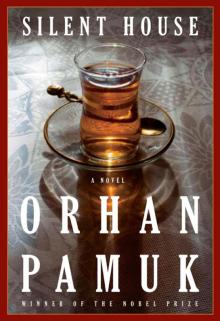 Silent House
Silent House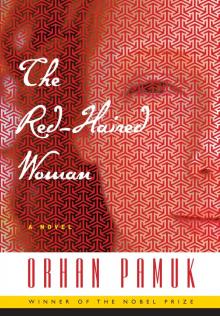 The Red-Haired Woman
The Red-Haired Woman The Museum of Innocence
The Museum of Innocence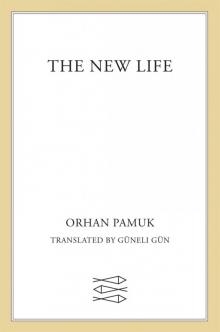 The New Life
The New Life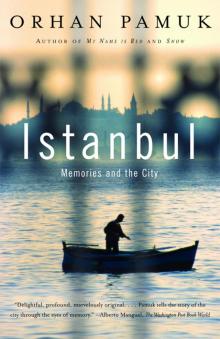 Istanbul
Istanbul